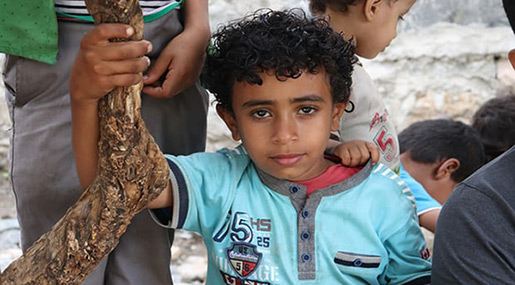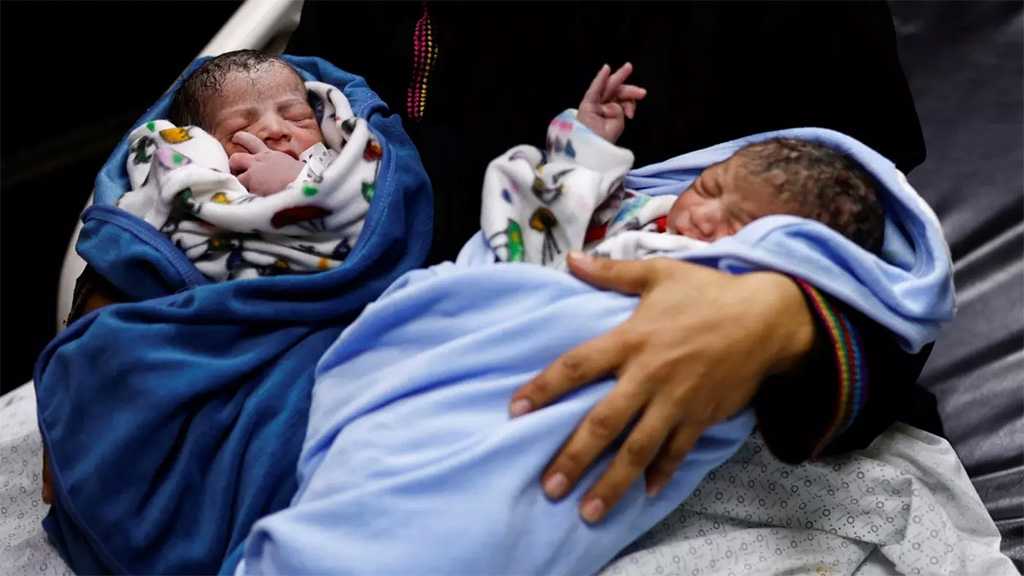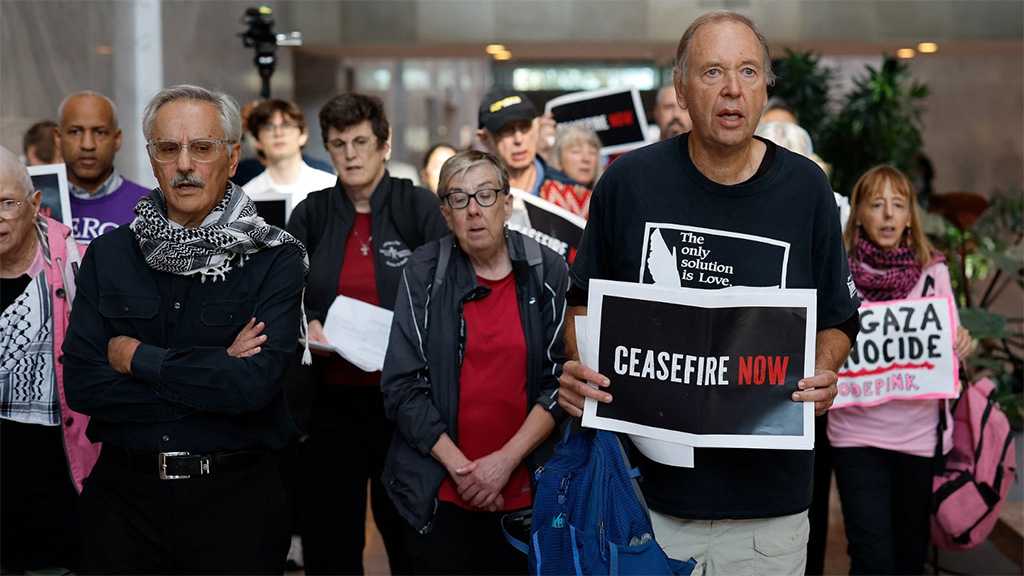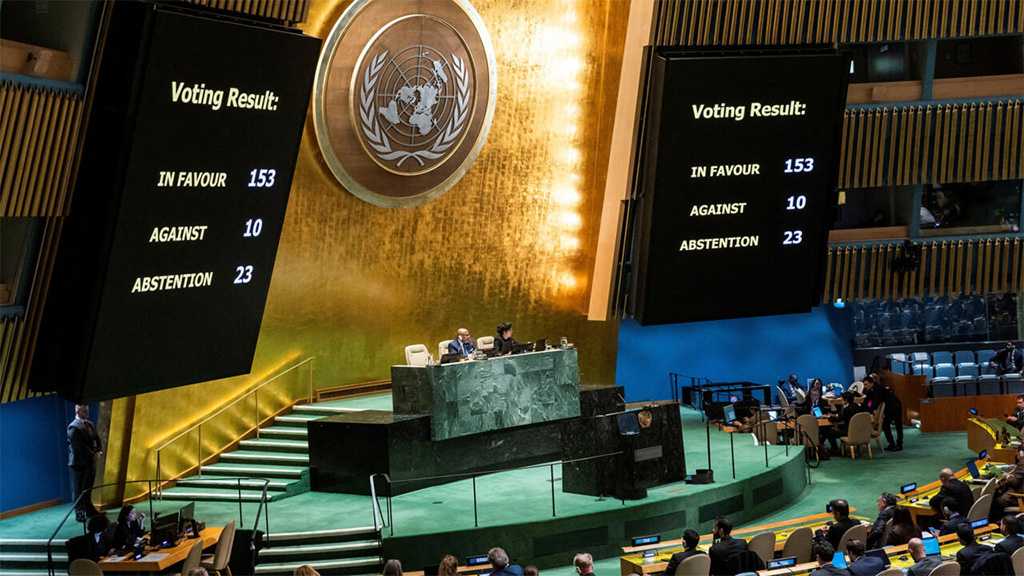
«Before I Had Everything To Eat. Now It’s One Bite»: Yemenis’ Struggle For Survival

Iona Craig
Ahmed Abdu was six when the war started in Yemen. Nine years old now, he is small for his age, but once a month he makes a four-mile trek from his mountain village of A'unqba, in the country's central highlands, to the nearest market where food is available. For half his life, hardship and scarcity have been the norm.

"Before the war you could eat whatever you wanted - chicken, chocolate bars, anything," says Ahmed, sitting cross-legged in a terraced maize field. "Now it's a bit of tea and just a handful of food, one bite only."
In A'unqba they first used electricity via generators in 2010. The nearest tarmac road is less than two miles away, although climbing the precipitous rocky highlands of Taiz governorate, which peak at more than 3,000 meters, driving that distance off-road can take up to an hour.
The village has one television set between 45 families, a mosque and a small shop where a can of sardines costs more than double the price in markets on the main road at the bottom of the mountain.
Pity the poor civilians in Yemen's vicious, deadlocked civil war, where the warring sides have been reduced to trying to grind each other into submission through blockades and sieges intended to make everyday life as difficult as possible.
The fighting in central Yemen escalated on 22 March 2015...
Four days later a rapidly formed coalition of nations, led by Saudi Arabia, launched a bombing campaign...
Then there is the blockade, imposed by the Saudis in an attempt to crush the Ansarullah. In peacetime Yemen imported 90% of its food, more than 70% of which usually comes through the port of Hodeida, where the Saudi-led coalition placed heavy restrictions on imports until shutting down access completely on 6 November.
The tightening of the blockade, which the Saudi kingdom said was necessary to prevent Iranian weapons from being smuggled in, included stopping aid and humanitarian workers from entering the country. Last Thursday, agencies said that aid was still blocked a day after the Saudi coalition stated it would allow humanitarian supplies in.
Ahmed's village was cut off by the fighting for five months during the first year of the war, when mortar rounds and missiles landed in the terraced fields surrounding his home. Although remote rural areas are able to grow corn and other basic crops during the rainy season, climate change has had an impact on their ability to survive during conflict. In the past, villages would store enough food to last for three or four months in times of emergency. In recent years less rainfall, resulting in reduced harvests, means little if any food is stored for periods of crisis. The wider restrictions on imports imposed by the Saudi coalition have driven up food prices, along with the rapid deprecation of the Yemeni currency since its flotation in August.
"The price of wheat has gone from 4,000 rial [£11] to 7,300 rial," said Ahmed as he trudged down the mountain towards the tarmac road. "The bag of sugar was 7,000, now it is 14,000, and the rice was 6,000, now it is 9,000," he said. "My life has been changed, the Houthis and the food ...", he trails off as if daydreaming about all the things he longs to eat. "Before, I had everything to eat, everything. I was happy, at ease. Now you can't even have one cake."
School is more or less permanently out. With teachers' salaries going unpaid, Ahmed's school in Taiz has been closed since May. "When they get salaries, they teach," he said.
Combined with the lack of government wages - unpaid since August 2015 - it means that families are living on little more than bread and oil. As a result, 70% of the population is in need of humanitarian aid.
Even before the restrictions on aid made earlier this month, seven million Yemenis were facing famine. Save the Children warned on Friday 24 November of 600 new cases of starving children under the age of five every day as a result of the tightened blockade. On 20 November Famine Early Warning Systems Network, an international body, predicted imminent mass famine across Yemen if key ports remained closed.
Ahmed's father has been looking for work since 2015, a search that has divided his family. His two brothers, two sisters and both parents now live on the other side of the frontline, over the mountain ridge. Ahmed has stayed in A'unqba to help look after his grandparents and two aunts.
...
Nama Ali, 50, lives on the other side of the conflict, in the governorate of Al-Raymah. After fleeing the conflict in her home town of Yareem, she now lives in a tent in Takareer with her children and grandchildren. Al-Raymah, just south of the blockaded port of Hodeida, has been at the epicenter of the highest death rate from a cholera epidemic that has swept the country since April. One million suspected cases are expected by the end of the year. In Takareer the women have no choice but to continue to use the local well, their only water source, which has already infected more the 200 people with cholera.
Oxfam warned on Saturday of a fresh spike in the spread of the disease, with eight million people expected to be without running water within days as fuel supplies run out due to the continuing blockade on northern ports.
"The punishment of ordinary civilians is never justified. These are real people whose lives are being callously jeopardized in other countries' war games. Yemen can't take much more. Unless the blockade is lifted, millions already in crisis will face a fresh catastrophe," Shane Stevenson, Oxfam's director in Yemen said in a statement.
The primary source of income for families in Takareer used to come from wages sent from abroad. Before the war most of the men from the village worked in construction or herding goats in Saudi Arabia. Forced to return when the Saudi intervention began, now their income comes from felling trees to make charcoal to sell in the local markets, as no one can afford to pay the inflated prices for cooking gas.
"No salary means no money, means no food," says Nama, whose lifestyle in a town had not prepared her for the job of fetching and carrying water from a well in the later years of her life. "The children don't have shoes any more, their feet are like rocks."
Education is an issue on this side of the conflict line as well. The lack of schooling for her daughters is one of Nama's greatest concerns for the future of her children. Their school in Yareem was bombed by a Saudi coalition airstrike. "My daughter was in the sixth grade and now she doesn't go to school," she said.
Nama has seen previous conflicts in Yemen, the civil war between north and south in 1994, and the long-running North Yemen civil war that lasted eight years from 1962. But those more isolated conflicts had less of an impact on the wider population. "This time everyone is affected wherever they are, even if it's a long way from the fighting," she said. "In this war thousands of women and children have been killed, look what they have done to Yemen," she said in reference to the Saudi-led coalition's military intervention.
Inevitably, as the conflict grinds on, the depth of suffering in rural areas is deepening, with more civilians fleeing the cities. At least 66% of the population was estimated by the World Bank to live in rural areas in the year before the war escalated in 2015. The proportion is now much larger. "All the men returned to the village when they lost their jobs and there was fighting in the city. We also have displaced people living here from other areas," said the sheikh of A'unqba, Ali Hussein.
Source: The Guardian, Edited by website team
Comments



